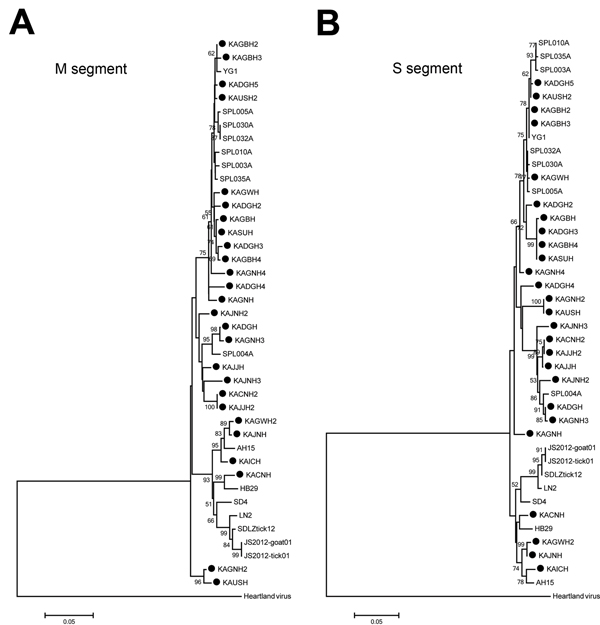Volume 20, Number 11—November 2014
Dispatch
Severe Fever with Thrombocytopenia Syndrome Virus, South Korea, 2013
Figure 2

Figure 2. A and B) Phylogenetic analysis of SFTSV Korea isolates based on the partial medium (M) and small (S) segment sequences. The phylogenetic trees were generated by MEGA version 5.2 software (http://www.megasoftware.net/) from aligned nucleotide sequences of 16 isolates of phleboviruses, including the identified SFTSV. Heartland virus was used as outgroup. M and S partial nucleotide sequences of SFTSV Korea isolates were compared with homologous sequences of previously characterized SFTSVs. Sequences were analyzed by the neighbor-joining method based on the maximum composite likelihood model. The minimal length trees shown were supported as the majority rule consensus trees in 5,000 replicates. The bootstrap replicates supporting each node are indicated. Korea isolates are marked with black circles. Scale bar indicates nucleotide substitutions per site.